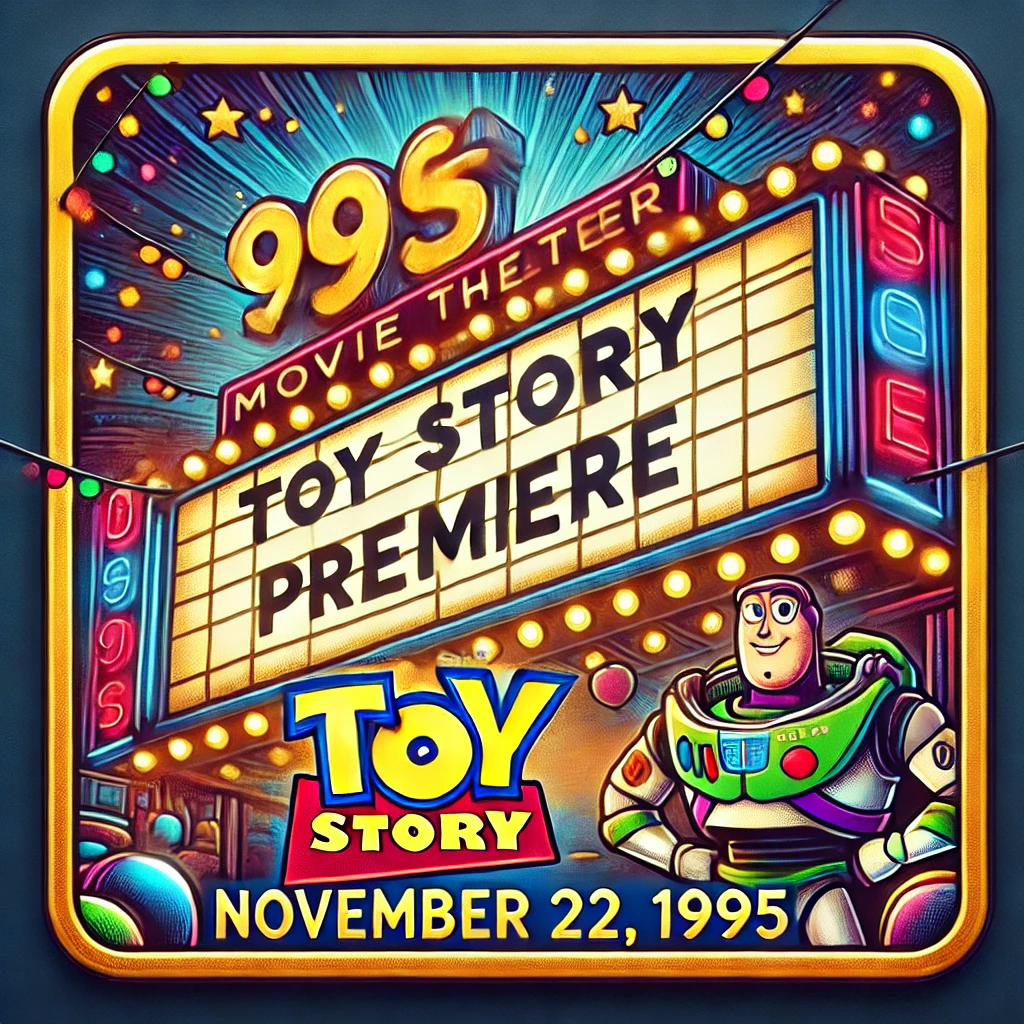Pixar’s groundbreaking animated film Toy Story premiered on November 22, 1995, marking a watershed moment in cinematic history. As the first-ever feature-length movie to be entirely computer-animated, it set a new benchmark for storytelling and technological innovation. This film not only redefined the animation industry but also captivated audiences with its heartfelt characters and imaginative premise, becoming a timeless classic.

The Birth of Modern Animation
Before Toy Story, traditional hand-drawn animation dominated the industry, with Disney reigning supreme through its string of classics. The arrival of Toy Story introduced a revolutionary technique: computer-generated imagery (CGI). Pixar’s creative team, led by John Lasseter, combined cutting-edge technology with a deep understanding of storytelling, giving life to characters like Woody, Buzz Lightyear, and the rest of Andy’s toy collection. The result was a visual experience unlike anything audiences had seen before, blending realism and whimsy in a way that immediately captured hearts.
The success of Toy Story was a culmination of years of innovation and collaboration. Pixar, then a fledgling studio, partnered with Disney to produce the film, showcasing the possibilities of CGI to the world. Its seamless animation and engaging narrative proved that computer animation could be more than a novelty—it could be art.
Cultural Significance and Box Office Success

Beyond its technical achievements, Toy Story resonated with audiences for its universal themes of friendship, loyalty, and self-discovery. Woody and Buzz’s journey from rivalry to camaraderie struck a chord with viewers of all ages, making the film relatable and emotionally impactful. Its humor, coupled with the iconic voice performances of Tom Hanks and Tim Allen, further elevated the movie’s appeal.
Toy Story was an immediate box-office triumph, grossing over $350 million worldwide. Its critical acclaim led to numerous accolades, including a Special Achievement Academy Award for Pixar. The film also cemented Pixar’s reputation as a powerhouse in animation, paving the way for future hits such as Finding Nemo and The Incredibles.
A Legacy That Endures

Nearly three decades after its release, the legacy of Toy Story endures. The franchise expanded into a series of beloved sequels, each building on the emotional depth and creativity of the original. The film also inspired advancements in CGI technology, influencing countless animated movies and redefining how stories could be told on screen.
Moreover, Toy Story transformed Pixar into a cultural institution, setting the standard for animated storytelling and fostering a new wave of filmmakers. Its groundbreaking success underscored the importance of taking creative risks, proving that innovation and artistry could coexist in mainstream cinema.
From its technical brilliance to its heartfelt storytelling, Toy Story remains a touchstone in the history of film. Its debut on November 22, 1995, not only marked the dawn of CGI animation but also left an indelible mark on popular culture, continuing to inspire generations of creators and audiences alike.
